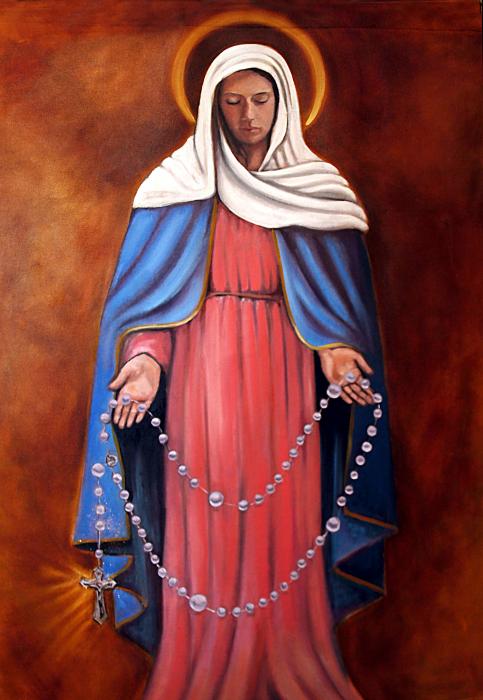The word Rosary means "Crown of Roses".
The rose is the queen of flowers, and so the Rosary is the rose of all devotions and it is therefore the most important one.
It's a prayer we can all say together with Her, the Mother of God.
The rosary to me means that they are beads that we use to pray the hail Mary glory be and the our farther on funerals or if we sometimes just want to pray and we use the for our reconciliation.The Catholic rosary has 59 beads with sections of 10 beads called decades.
2.Where did the Rosary come from?
The rosary came from the Romans. the rosary is resemble of the palms in the 9th century.The rosary was given to Saint Dominic in the rose garden (That's why its called the rosary) in an apparition by the Blessed Virgin Mary in the year 1214 in the church of Prouille.
3.Why is the Rosary associated with Mary?
All these mysteries relate with mary
Joyful mysteries
- The Annuciation
- The Visatation
- The Nativity
- The presentation of jesus in the temple
- The fixing of jesus in the temple
The sorrowful mysteries
- The agony in the garden
- The scourging at pillar
- The crowning of the thorns
- Jesus carries his cross
- The crucifixion
The luminous mysteries
- The baptism of the christ in the river jordan
- The marriage feast at cana
- The proclamation of the kingdom
- The transfiguration
- The institution of the eucharist at the last super
The glorious mysteries
- The resurrection
- The accession
- Penetecost
- The assumption
- Mary is crowed queen of heaven




